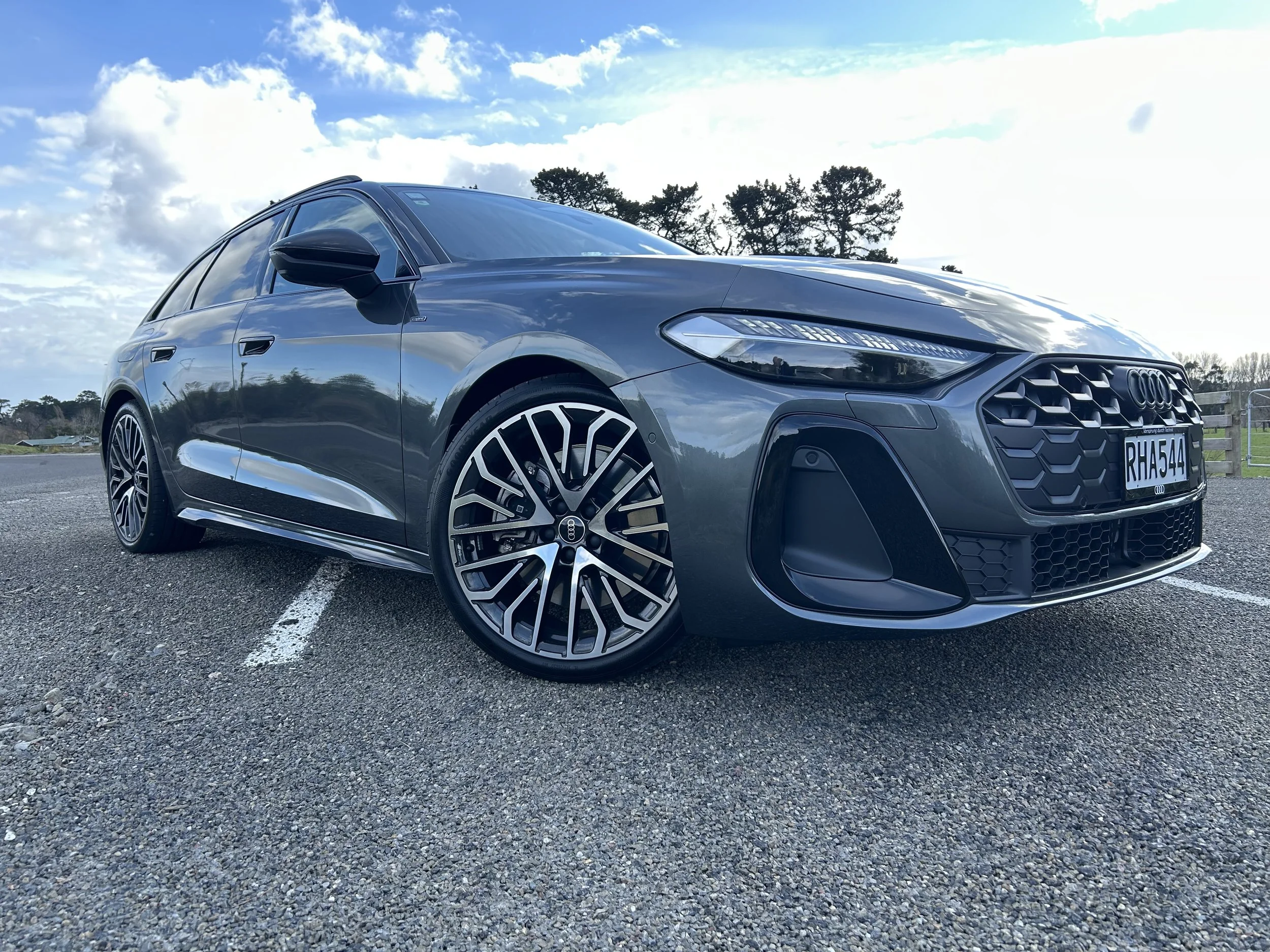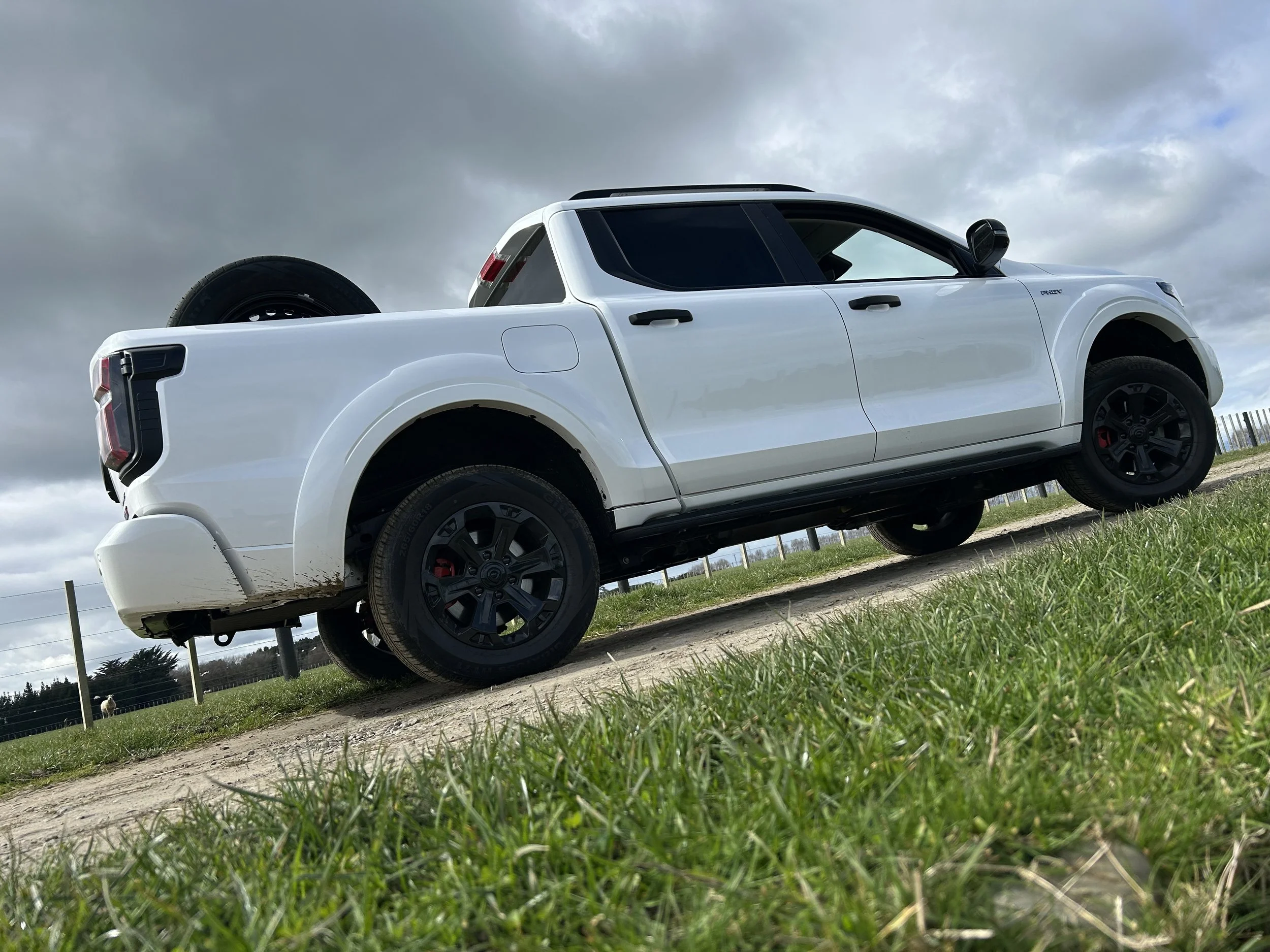VF2 Redline: Big bore blast sends V8 hero out in style
/Even supercar producers are downsizing and increasing the efficiency of their ‘big banger’ engines these days - so in doing the exact opposite with the last reprise for the Commodore, does Holden know something the rest of the car industry doesn't?
Holden New Zealand boss Kristian Aquilina
COMMODORE’S resistance to the general slump in big car sales plus re-emergent interest in V8 performance is enough to ensure the just-introduced VF2 line should cruise to the end of its production life even if fuel prices turn sour.
That’s an optimism expressed by Holden New Zealand boss Kristian Aquilina speaking to Motoring Network about why his brand is on the right track introducing GM’s most heroic normally-aspirated muscle car engine, the 6.2-litre LS3, into the Commodore as a last blast treat for red-blooded enthusiasts.
Aquilina refuses to call VF2 a last hurrah car.
“We’re very precise in describing it as Holden’s next Commodore, as often the reporting refers to it as Commodore’s last hurrah. We’ve announced that we will continue to release Commodores well into the future. It’ll be an ongoing brand in our lineup, albeit in a different composition.”
However, he agrees that while a nameplate that dates back to 1978 will live on after the brand ends its Australian car-making programme at the end of 1967, this current model will be the last big Holden sedan to take a V8.
It’s perceived that the imported product that follows VF2 – most likely the next-generation Insignia – will top out with a boosted V6.
This decision has created a turnaround in V8 interest that, perhaps 10 years ago when the car was more sensitive to fuel cost, would have seemed impossible. Holden has used this surprise trend to shape the VF2; while the six-cylinder cars all update (with specification enhancements and even a brake upgrade Holden first developed for a pitch to provide police cars to America), they are lightly touched compared to the V8 editions, notably the flagship SSV Redline which with suspension, brake and performance updates becomes even more of a threat to Holden Special Vehicles’ entry cars.
The LS3 engine is the real treat, though. It is a true hero, having been the exclusive domain of HSV models for the past seven years and also serving time in the Chevrolet Corvette. It’s also been tested in Commodore – albeit in the US-market left-hook Pontiac G8 and Chevrolet SS that Holden ships Stateside.
Dropping it in as a replacement for the 6.0-litre L77 means a big lift in power and torque – whereas the outgoing mill produced 260kW/517Nm in automatic guise and 270kW/ 530Nm when hooked-up to the six-speed manual, the LS3 lays down 304kW/570Nm with both transmission options.
A higher 6600rpm rev limit (600rpm higher than the 6.0-litre) and revised gearing allow the new edition to smash 0-100kmh in 4.9 seconds in manual and five in auto. The Redline manual also manages the 400 metre sprint in as little as 13s and also hits 182kmh past the post for the latter – a 20kmh improvement.
Is this what we still want? Holden says the customer demand is clear. “It’s what our customers have been asking for quite some time.”
While the SV6 remains the top-selling single edition here as in Australia, over the past year one in every four Commodores sold has been a V8 edition. The take-up – which discounts Holden Special Vehicles sales - has been even higher across the water, with a one-in-three rate. Aquilina believes the latter ratio could be possible in NZ, such is the pulling power of the latest V8 that headlines a chorus of changes to the swansong Commodore.
“I’d say we’ll nudge up a bit, I’d like to be in the 30s (percent). When VF launched, it happened … they (V8 buyers) are the loyalist of customers who come to us first and want the latest and greatest. ”
The V8 charge will be interesting to chart in NZ, given that Commodore already maintains counts that defy the otherwise proven theory that big sedans are no longer our thing. One key factor is that it has steady work assignation as the country’s top cop car; a role that will continue after VF production stops as a deal has been done to provide NZ Police with enough new cars to last them until 2020. Commodores are also going to the private, business and rental sector.
In achieving 362 sales in September (for No.2, behind Toyota Corolla) and 2124 year to date (for third spot, beaten by Corolla at 4058 then Toyota RAV4 on 2529), the VF this year might not have the grunt to equal last year’s boomer 3001 sales catch (making it that year’s second-best seller), but it’s doing hugely well for a big car, Aquilina aknowledges.
The twist is that Kiwis are slowing greater allegiance than Australians. Despite the V8 resurgence, the lucky country has been a tough territory for the Holden brand; it hasn’t enjoyed market leadership for 13 years and there’s potential that this year it will see less than 100,000 cars – a low last experienced in 1993.
It gets worse: The top three status that Holden enjoys in NZ is slipping away in Australia; only a huge sales push will keep it from losing a status it has held since 1948.
Aquilina is loath to be drawn into discussing the parent’s
issues, but agrees that “proportionally our sales rate (in NZ) has held up pretty well. The SV6 is doing most of the heavy lifting … it is the choice for business, private customers and fleet and I think it will continue to be. But we should see a bit of an uplift in the V8.”
He reckons that Holden is at least in good shape to achieve a symbolic win with the V8, whose big muscle, an emotional soundtrack and a piffling $1500 price increase over the outgoing LS2, should be enough to pull in those died in the wool enthusiasts who rate as the core customer group.
“We wanted to provide something more than just the driving feel that Commodore is famous for but bringing a multi-sensory experience. A lot of work and innovation has gone into that.”
He believes the revheads won’t be dissuaded by the engine’s one poor quality, the usual issue of poor fuel consumption. Never a Commodore V8 strongpoint, the burn rates optimally at 12.6 litres per 100km – a full litre per 100km worse than before. And that’s a science lab result. On the road for Holden’s media launch, cars all averaged a sobering 17-18L/100km.
It’s nothing that HSV hasn’t coped with, of course, and though buyers of ‘regular’ Holden product do tend to be more sensitive to fuel cost, Aquilina says it’s always been different with V8s.
“V8 customers tend not to be constrained by fuel economy figures.”
Rather, they’ll take that hit simply to enjoy what the maker calls a car aimed “right at the heartland.” One that it provides three times the power of the original V8 Commodore of 1978 and leaves the scene as the most powerful Commodore ever.

















